I wanted seclusion. Guides and rangers told me that the uncrowded areas of the North Fork in Glacier National Park would be my best bet. To access places like Bowman Lake, Kintla Lake, and Quartz Creek we needed to traverse dusty and narrow dirt roads. We were willing to take the trip to see what adventures we could find.
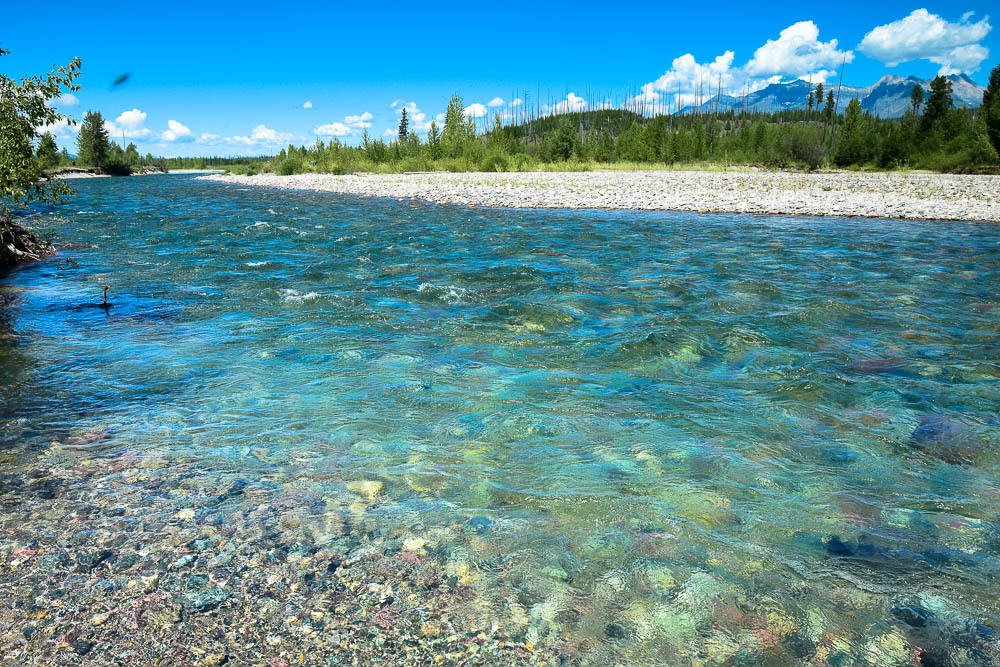
The North Fork Flathead River is a 153-mile river flowing through British Columbia, Canada, south into the U.S. state of Montana
North Fork Road
With a full tank of gas, we headed out on North Fork Road. The actual road itself starts in the town of Columbia Falls, but the pavement ends at mile 13. The road beyond offered us dusty dirt and crushed rock, which washboards quite frequently for an additional 40 miles before nearly reaching the Canadian border.
Despite the numerous potholes and jarring ruts, we found lovely views of the North Fork Flat Head river and its clear blue waters. Occasionally we drove through bucolic ranches and pastures holding cattle and sometimes elk. At one point we stopped to let a deer pass from one wooded area to another.
Butte Oil Company originally built North Fork Road in 1901 to accommodate wagon traffic to their oil well at Kintla Lake and from its station Lake McDonald. Later in the 1930s and 1940s, the National Park service improved the road by adding culverts and drains, but never really paving it over.
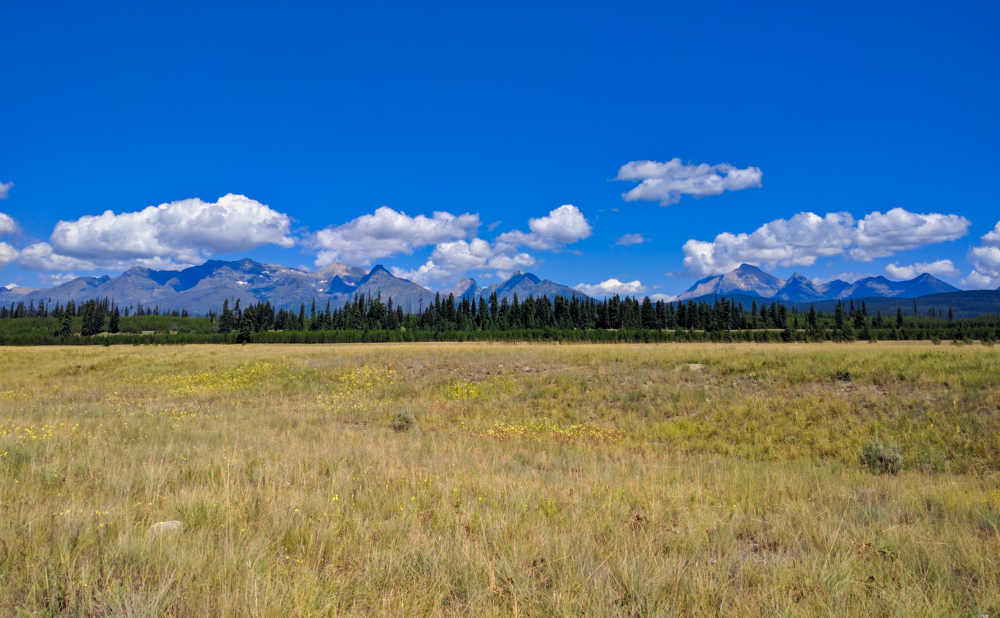
Big Prarie
Polebridge Ranger Station
Just before reaching the ranger station, we passed through a town which warns folks to, “Slow Down, People Breathing.” I don’t blame them, incredible amounts of dust can billow up in the hot August days.
We finally reached Polebridge Ranger Station, driving over 30 miles in a little over an hour. Here sits the park’s first ranger station, first established before the park itself. The historic district formerly included of five cabins, one barn, an oil house, a woodshed converted to a checking station, a garage, generator house, fire cache, washhouse, and a residential home. More buildings were added later, but all of that burned down in the 1988 Red Bench Fire. The checking station and the ranger station residence were the only survivors.
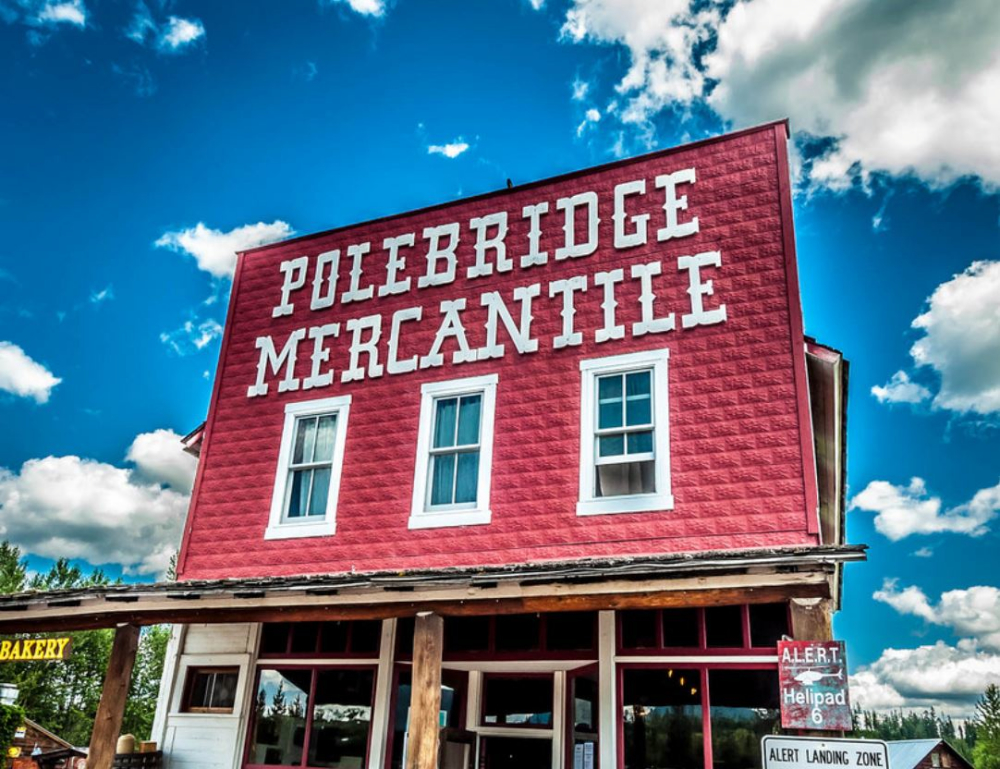
Polebridge – This community is named for the log bridge that formerly connected the “inner” North Fork Road in Glacier National Park to the “outer” North Fork Road
Bowman Lake
From the Polebridge Ranger Station, we drove another six miles. Bowman Lake road winds narrowly up toward the lake, through a dense regrowing forest. We collapsed our side mirrors and used several pullouts to avoid oncoming cars.
When we reached Bowman Lake there little no parking, anywhere. It looks like a lot of visitors had the same idea as we did! We were barely able to navigate the path already thick with vehicles just to get out. When the guidebooks say “not commonly visited,” they weren’t talking about a superbly sunny Wednesday in the middle of August.
We gave up on Bowman and started driving back to Polebridge. Along the way, we saw a couple driving a large truck camper. Hitch warned the other driver of the impending tight road.
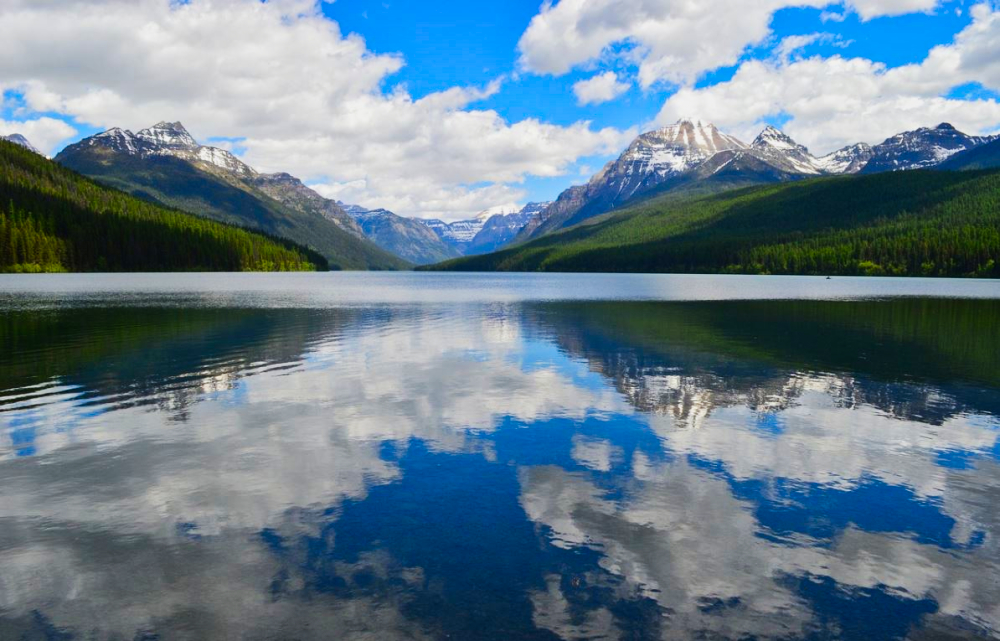
Bowman Lake
Kintla Lake
When we got back to Inner North Fork Road, we turned northward and prepared ourselves for another 14-mile ride. About 3 miles in, the path turns into Kintla Lake Road. Just as dusty, narrow and bumpy as the previous road, we weaved through golden grass meadows and forests recovering from the 2003 Wedge Canyon Fire.
Upon reaching Kintla Lake, we discovered the quiet and solitude we expected at Bowman Lake. This campground opens only in the summer and features a tent ranger station for visitors. With only 13 tent campsites and a hand pump its no wonder not many folks come to visit.
The spectacular view from the lake shore stunned me: the water clear and placid, and then framed by Parke Peak to the south, and Long Knife Peak to the north. Possibly the only time I will ever regret not owning a kayak because it’s a lake that begs to be rowed out upon.
After a bit of reading, I later learned that “Kintla” is the Kutenai word for “sack.” According to a Kutenai story, a man drowned in the lake. They likened the lake to a sack — “after you got in you could not get out.” Regardless of the story, I found myself wanting to come back to Kintla Lake just to kayak its waters.
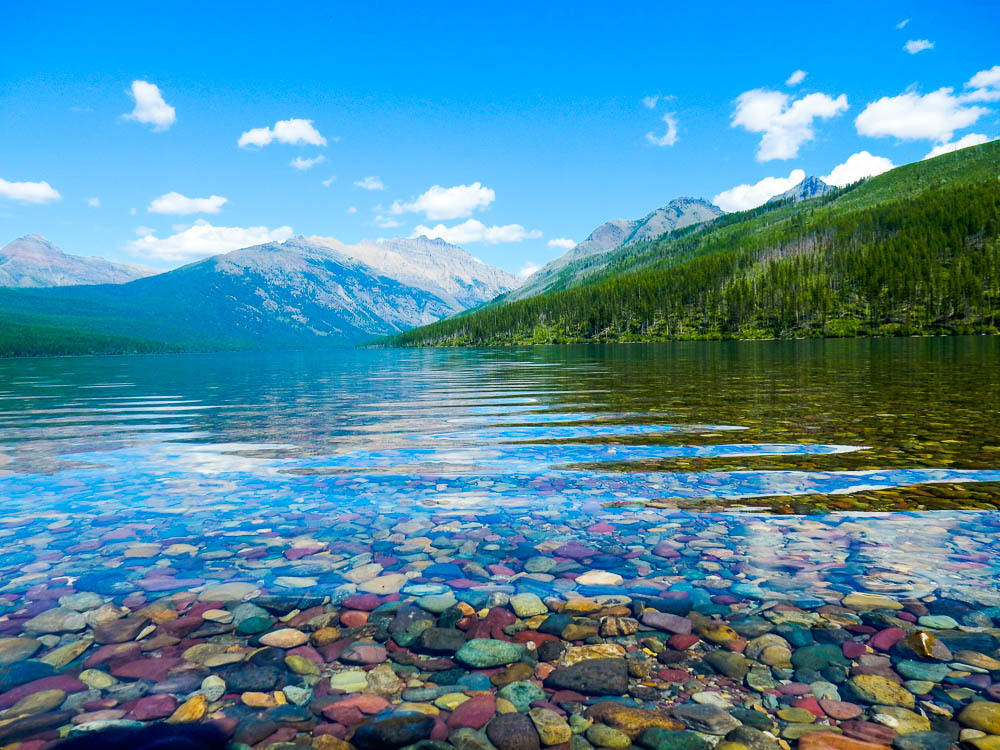
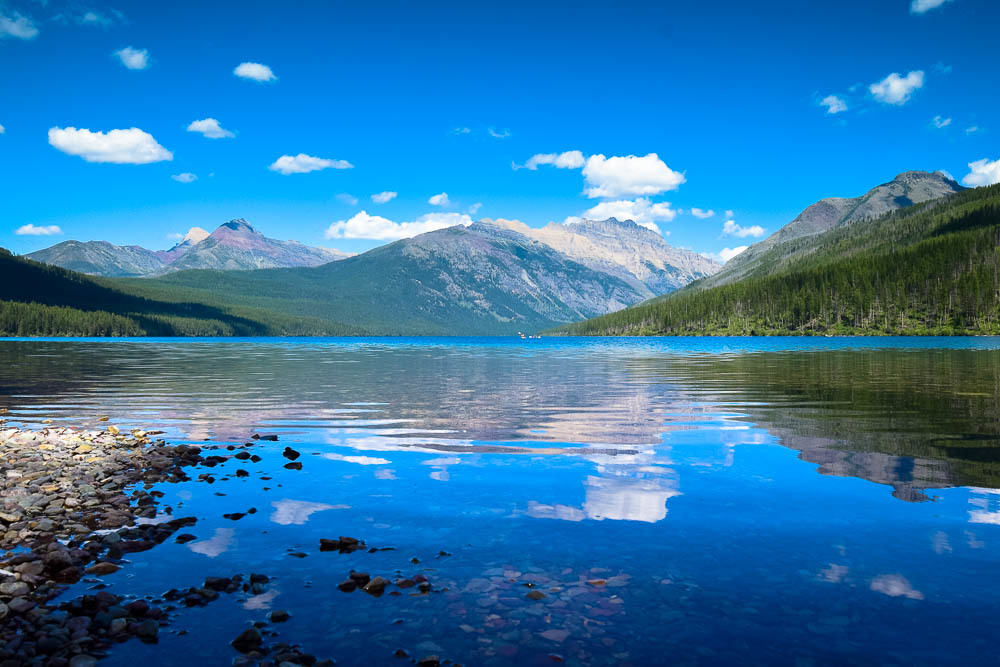
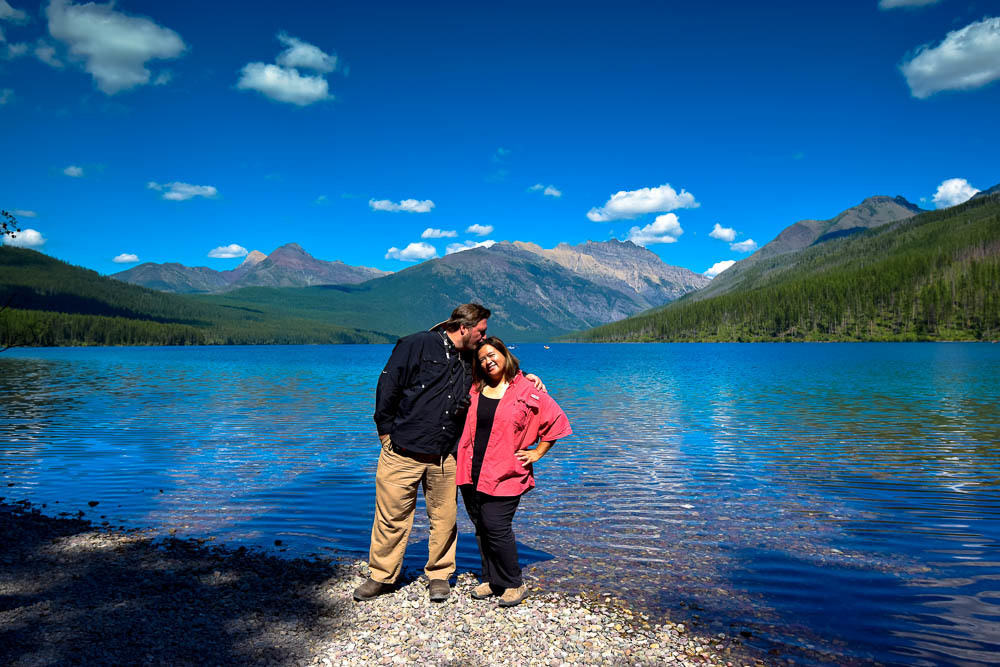
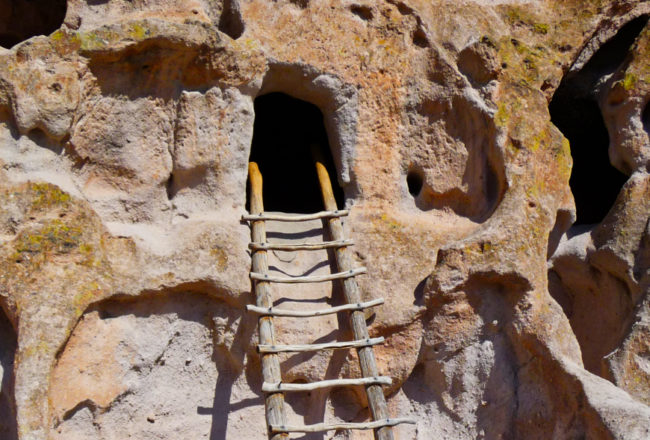
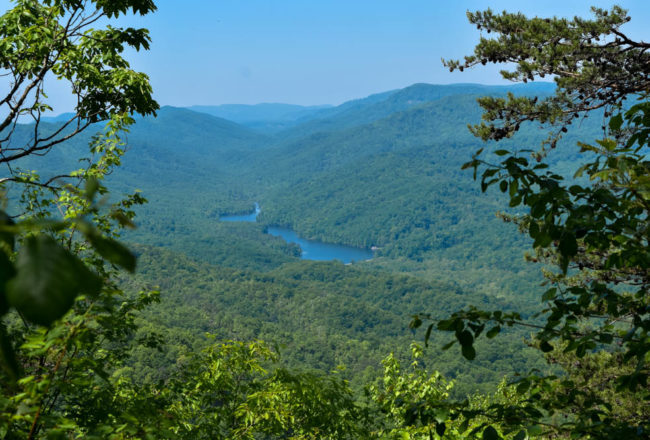
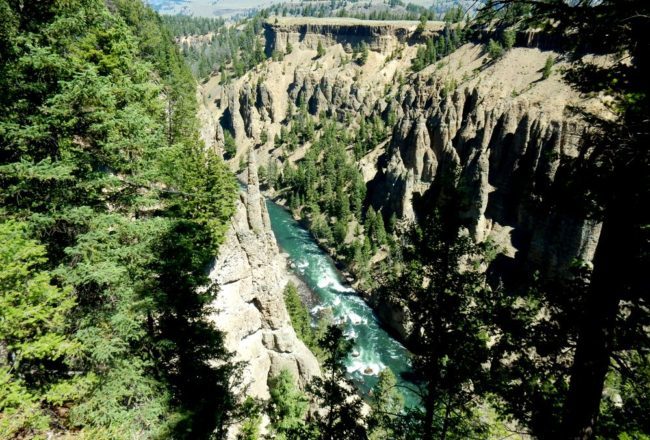


4 Comments
Why were rocks in lake so many colors?
Good question! Here’s what my guidebook says about the rocks found in Glacier National Park Lakes:
“The color of the rocks is determined by the presence or absence of iron. The bright red rocks found along the Grinnel Glacier trail were deposited in a shallow ocean environment where the iron was oxidized by the tidal exposure to the air. Rocks with this coloration often have old ripple marks or ancient mud crack lines.
The rich green-colored rocks were formed in deeper water than the red rocks. Although these rocks contain the same quantities of iron-bearing minerals, they did not have the same exposure to oxygen and the amount of oxidization was limited.”
From “Glacier-Waterton International Peace Park” by Tom Kirkendall & Vicky Spring
I just discovered your blog, and am loving it! My husband and I are planning to take to the road after our kids finish this school year (so next June-ish). We’re still in the planning phase, and I just want to THANK YOU for giving so much information on your journey. Your journeys are inspiring!
Thanks for the kind words! Good luck on your adventures and don’t forget to have fun!